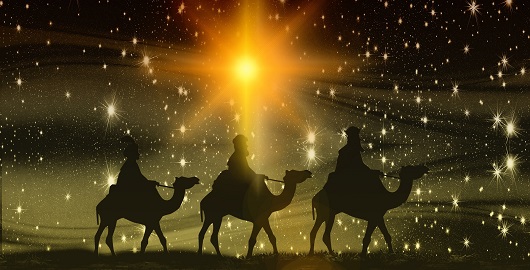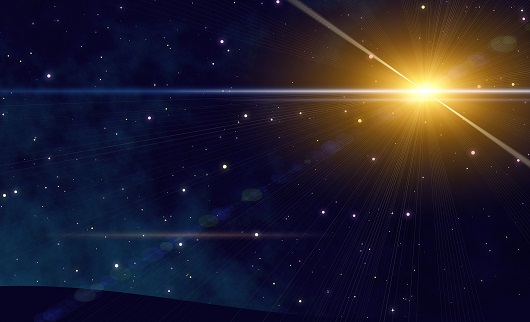Should we replace stars with planets on our Christmas trees?
Myth or miracle: for generations there has been debate over the Star of Bethlehem, the star that inspired the Three Kings. Here Dr Aleks Scholz, School of Physics & Astronomy at the University of St Andrews and Director of the University Observatory, considers the evidence and offers some possible explanations.

For many years some astronomers, working under the assumption that the Star of Bethlehem was in fact an actual celestial object, have suggested possible astrophysical explanations.
In doing so, they do not only have to find the right kind of object, but also the one which had the significance that made the wise men go and seek the infant Jesus. Two-thousand years ago, astronomy and astrology were one.
In many depictions the Star of Bethlehem looks like a comet. But there are many reasons to doubt that comets led the Magi to Bethlehem. For one, comets do not look like stars, and these people were not stupid. Halley’s Comet, the most obvious candidate, appeared in the sky in 12BC, several years before the plausible birth date of Jesus. Finally, comets were seen as harbingers of doom, and this was a joyful event.
Another theory postulates that the Star of Bethlehem was actually a new star on the sky, a nova or a supernova. It was originally Kepler’s idea, but sadly we do not have independent records of a bright supernova at this period. That doesn’t mean it didn’t happened, of course. Today we observe these objects routinely, but at that time people would not have known how to read them.
Perhaps the most plausible explanations for the Star of Bethlehem involve multiple planets, standing close together: a planetary conjunction. Indeed, there are several rare meetings between prominent planets in the right time period.
In 7BC, Jupiter and Saturn met three times. One year later, Jupiter and Saturn were joined by Mars. What followed was a fantastic sequence of conjunctions in 3 to 2BC: Saturn with Mercury, Saturn with Venus, Venus with Jupiter, and Venus with Mercury.

Then again Jupiter with Venus, this time they got so close to appear as one to the human eye. Around the same time, Jupiter, the planet of the kings, was dancing around the bright star Regular, the star of the kings.
Then Jupiter stopped, in the constellation Virgo, seen from Jerusalem straight above Bethlehem. Here is a spectacle of planets with plenty of astrological significance, happening around the right time – although that last part is still debated.
Maybe we should remove the comet-shaped stars from the Christmas trees and replace them with triple planets.
We will probably never get a definite answer. Maybe this is one of the questions that is not supposed to be answered.
NOTES TO NEWS EDITORS/INTERVIEW REQUESTS
Dr Scholz is available for interview via the Communications Office – contacts below.
St Andrews has an in-house ISDN line for radio and a Globelynx camera for TV interviews. To arrange an interview please contact the Communications Office in the first instance.
The University Observatory in St Andrews is an outpost of the astronomy group at the School of Physics and Astronomy combining astronomical research, teaching and outreach and is home to the James Gregory Telescope, the largest working optical telescope in the UK.
Issued by the University of St Andrews Communications Office. Contact Steve Bargeton, on 01334 467310 / 01334 462530 / 07802 376 860 or [email protected].
Category Research